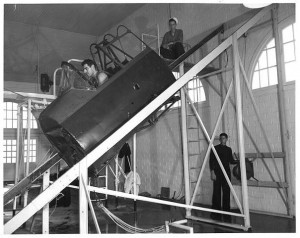At 94, Alumnus Engineers Orchards
-
-
slice.mit.edu
Filed Under
Recommended
Managing an orchard of nearly 900 apple and pear trees that he bought in the 1970s on the banks of the St. Lawrence River, Kaneb is an engineer of the land. Reached by phone this week, Kaneb spoke warily of the half-foot of April snow the farm received right in the midst of pruning season. At 94 years old, though, nothing fazes him. Kaneb shoveled out then returned to the orchard to prune, a rite of spring he hasn't missed in four decades.
“I work away at it, six days a week,” says Kaneb. “It takes five or six weeks to get everything pruned.”
Kaneb grows MacIntosh, Honey Crisp, Cortland, Russet, and Empire apples, and Flemish Beauty, Bartlett, and Anjou pears. Some varieties came with the farm when he bought it. Others, like the Honey Crisp and Empire, he introduced himself.
Kaneb says that while he used to sell his produce and make part of his living off the land, “times have changed, the people have changed, and how we eat has changed.” No matter. Kaneb has plenty of willing consumers in church groups, food banks, and schools. “Even then, we still have some left over,” he says.
Though Kaneb is known well in town for his bountiful crops and generosity, he is also somewhat of a legend. After graduating from MIT, Kaneb entered the Naval Reserve and was put to work applying his engineering talent in Pensacola, FL, home of the Navy’s flight school. Kaneb designed the Dilbert Dunker, a detached cockpit from an old plane that plunged frightened, aspiring pilots deep into a swimming pool upside down to train them for escaping crashes at sea.

Kaneb designed four Dilbert Dunkers in all, one of which went on display last fall at the National Naval Aviation Museum in Pensacola. The museum honored Kaneb for his contribution in 2009, when he donated his papers to it and was reunited with his invention of seven decades prior.
"The Army colonel said somebody has got to teach them what it is like to be drowning," Kaneb recalled at the time. "It took us between six months to a year to design and build it."
"If you think of all the people who have gone through [the Dilbert Dunker], all the astronauts, the people who went to the moon...they all had to go through Pensacola, through this one," said the Navy captain overseeing the visit.
Kaneb is most at home on his farm, though, where his four children, seven grandchildren, and five great grandchildren visit often. In the winter, Kaneb snowshoes across the acreage, surveying the deer tracks, taking stock of the pond he designed, the rows of fruit trees he planted, the fire pit where he burns trees blighted with disease, and the irrigation system he built to water them. “We do everything ourselves,” says Kaneb, “and everything is pretty good.”
Though he missed his 70th reunion, Kaneb says he’ll be at his 75th. And he occasionally gets a call from his classmate, Israel Lenzner '43, who lives in Florida. Few alumni can chat about the old days at MIT as they do.








